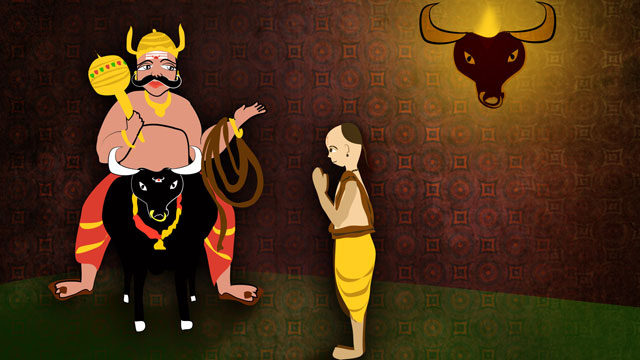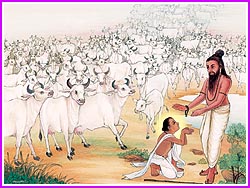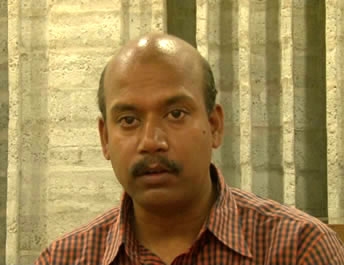Ayodhya Nanihal Series. III
Makar Sankrānti is celebrated when the Sun enters the constellation of Capricorn from Sagitarius, and according to the Vedic zodiac this phenomenon happens on January 14/15 every year, and is celebrated as the dawn of the Uttarāyan movement of the Sun.
According to the Bhagvadgītā’s Chapter 8 –
अग्निर्ज्योतिरह: शुक्ल: षण्मासा उत्तरायणम् |
तत्र प्रयाता गच्छन्ति ब्रह्म ब्रह्मविदो जना: ||24||
agnir jyotir ahaḥ śuklaḥ ṣaṇmāsā uttarāyaṇam
tatra prayātā gacchanti brahma brahmavido janāḥā
धूमो रात्रिस्तथा कृष्ण: षण्मासा दक्षिणायनम् |
तत्र चान्द्रमसं ज्योतिर्योगी प्राप्य निवर्तते ||25||
dhūmo rātristathā kṛiṣhṇaḥ ṣaṇmāsā dakṣhiṇāyanam
tatra cāndramasaṁ jyotiryogī prāpya nivartate
शुक्लकृष्णे गती ह्येते जगत: शाश्वते मते |
एकया यात्यनावृत्तिमन्ययावर्तते पुन: ||26||
Śukla-kṛiṣhṇe gatī hyete jagataḥ śāśvate mate
ekayā yātyanāvṛittim anyayāvartate punaḥ
Meaning (Bhagvad Gita, Commentary by Swami Muktananda), Those who know the Supreme Brahman and who depart from this world, during the six months of the sun’s northern course, the bright fortnight of the moon, and the bright part of the day, attain the supreme destination. The practitioners of Vedic rituals, who pass away during the six months of the sun’s southern course, the dark fortnight of the moon, the time of smoke, the night, attain the celestial abodes. After enjoying celestial pleasures, they again return to the earth. These two, bright and dark paths, always exist in this world. The way of light leads to liberation and the way of darkness leads to rebirth.
Thus, Uttarāyan movement of the Sun is very auspicious, and it is stated in Māhābhārata that Pitāmāhā Bhīshma waited 58 days for this occasion on the bed of arrows to depart from the Earth. It is somewhat connected to the Winter Solstice that currently occurs on December 21/22, and the difference may be due to the use of Gregorian calendar, according to an article by Kartik Chaturvedi (The Astronomical Significance of Makar Sankranti, Science, February 13, 2022).
Makar Sankrānti is celebrated throughout India, albeit with a regional and local tinge to it, in terms of names, such as Thai Pongal (Tamil Nadu), Uttarāyan (Gujarat), Lohri (Punjab), Poush sôngkrānti (Bengal), Suggi Habba (Karnataka), Makara Chaula (Odisha), Maghi Sankrānt (Maharashtra and Haryana), Magh/Bhogali Bihu (Assam), Shishur Saenkraat (Kashmir), and Khichdi Parv (UP and Bihar). Interestingly, one thing is common in its celebration, from south to north and from east to west, and that is a rice dish, mostly called khichadi or Pongal. The question is where did this tradition begin and how far it has traveled?
India is arguably one of the most ancient countries of the world, and a country that is at least civilizationally the origin of the most of the world population. There are two lines of evidences to support India’s ancientness and its connection with the remaining world civilizations. One is the population genetics data that shows the origin of the human race in the central part of Africa, over 2,00,000 years ago. Over 70,000 years ago humans in large chunks began to migrate to India. In an article entitled ‘Out of Africa, into India’ it has been asserted that human migration to India may have been more than coincidental. The other being the cultural one that includes language, food, and dress.
For the timeline of the population genetics data, it may be noted that according to Indian cosmology, a kalpa consists of fourteen manavantaras, each with seventy-one Yugas of 12,000 years. At present we are living in the 28th of Yuga of the 7th manavantara. Every Yuga sees pralaya (deluge) and srishti (creation). There is no equivalent day of reckoning like other biblical religions in Hindu cosmology or mythology. This makes human civilization about 5,448,000 years old, which is in the range of around 2 million years supported by modern scientific calculations. Every manvantara has its own Manu. At present, the progenies of Vaivasvata Manu, are in the existence since 336,000 years (Singh, 2022: “Land of Ayurveda, India, That Was, That is, and That Could Be”…, Ayurveda Journal of Health, Volume 20, pp. 32-40). The word ‘Manu’ is interesting, as later words like manava, manusya, or even ‘man’ or ‘Adam’ (from ‘Ādimanu’) of English language are derived from the same root. So, linguistically this credits India as the cradle of human race.
According to various texts (for example, The Matsya Purāṇa, A Study By V. R. Ramachandra Dikshitar, M.A., Lecturer In Indian History, University of Madras, 1935), Vaivasvata Manu is supposed to have founded the kingdom of Ayodhyā, on the bank of Saryu river, as his son Ikshavāku is the originator of the Suryavaṅśa or the solar dynasty, and his another son, Ila is believed to be the originator of the Chandravaṅśa or the Lunar dynasty. After the Vānaprastha, he and his queen Śatarupā are supposed to have retired for his tapasyā in the forest, which is in the Avadh region.
Evidently, this makes Ayodhyā as the first city of human civilization and her language Avadhi, as the spring-well of all later languages of the world. Although, some tend to credit Vedic Sanskrit as the oldest language (or even devabhāṣa), but the classical Sanskrit (literary, the purified, or perfected, or cultivated, or adorned), as we know it today, was organized by Māhāṛṣi Pāṇini only around 2500 years ago. Even Vedic Sanskrit could not be more than 30,000 years old. Linguists, therefore, are in favour of considering more germane languages like Prākrit, with Avadhi and Tamil variations in North and South India. There is a reference in the Matsya Purāṇa, which suggests Vaivasvata Manu of Dravidian origin, who moved to Ayodhyā during the epochal deluge (Singh, 2021: “A New Narrative of Ayodhya as the Nanihal of Humanity,” Vedic Waves blog, August 6, 2021) .
As per Dikshitar (1935), “The origin and date of the Matsya Purāṇa have long been a matter of speculation among scholars. Orthodox tradition has it that this Purāṇa was revealed originally by Lord Viṣṇu in the form’ of a fish to Vaivasvata Manu, the first king of the solar dynasty who survived the deluge (Pralaya) which resulted in a partial dissolution of the world and not in its total annihilation. In this connection, two legends, the legend of the flood and the legend of the incarnation of Viṣṇu as fish require a careful investigation.” Further (Dikshitar, 1935), “according to the Matsya Purāṇa the place where Manu, the hero eponymos of the Vedic mythology and son of Aditya Vivasvat, performed his penance, is the Malaya Hill in South India. This receives further corroboration from the Bhāgavata Purāṇa where reference is made to the king of the Dravida-desa in connection with the Deluge. This theory gains further support, if the five tribes of the ṚgVeda, who are supposed to be the offspring of Father Manu, bear any affinity to the five natural geographical divisions of the territory to which the Tamil Sangam Literature makes such pointed reference. The geographical divisions of people, according to Tamil literature are maritime, hilly, sandy, agricultural and forest.” Elsewhere, it is stated that the purpose of this Matsya incarnation of Viṣṇu is said to be to recover the Vedas or revealed texts after slaying the demon Hayagriva who had stolen them.” The names in this account are not Manu and Malaya. But it is Satyavrata, the royal sage, the king of Dravida-desa. Thus, the Dravidian origin of the King Manu has a preponderance of the textual reference. The question is what cultural connection can be established between the Dravidian King Manu and the Manu of Ayodhyā in north India. One thing, there are some common words between Tamil and Avadhi and Tamil, such as Amma for mother, Appa/Bappa for father, and peculiarly Pillu for little babies.
However, a most compelling case is made for the celebration of Makar Sankrānti. While it is known as Pongal in Tamil Nadu, the dish for the celebration of the festival is prepared from rice, just like the Khichadi in north, particularly the Avadh region. The festivals in India are mostly celebrated at some harvest, especially when a specific food is served at the festival. The rice crop in north India is harvested in November, so a January celebration for a rice crop does not make any appropriate sense. However, it is a recent discovery for me to learn that in Tamil Nadu there is a rice crop in January. It is, therefore, quite likely that rice dish tradition was imported along with King Manu, making the Dravidian origin of the Manu more strongly established.
This finding may have more implications than simply a festival, as the Dravidian origin of Indian culture and civilization will have social, political, linguistic, and dhārmic repercussions, and will completely destroy the concepts of Aryan Invasion Theory mooted by the British for a long time. There will be questions about Sanskrit or the Tamil being the most ancient language, and finally it will explain the most authentic Hindu practices in India being that of the Tamil or South India origin. Much research and analysis is further needed.
Interestingly, in a genetic study by National Geographic Society (See, Singh, 2021, above) it has been proven that human population initially migrated from Africa to the Indian Subcontinent, and that too, first to the South India, and then from here to everywhere else, making India as the main source of human migration some 65,000 years ago.
This may provide further cultural and linguistic connections with Ayodhyā and Avadhi to the many parts of the world. Avadhi, thus, becomes a prime source of many languages. Exploring links between literature of Avadhi and other languages could provide whole new gamut of research. For example,
Avadhi language, therefore, not just be a source of speech in the world but also culture, a culture of a civilization that still brings out passion in India, and, indeed, throughout the world. It will be wonderful to examine the cultural connection of India throughout the world. I recently learned from one of my associates in the United States, Mr. Paul Lindo, who mentioned that as per his family tradition, he used to touch the feet of his grandfather as a mark of paying respect, something that is seen as a very common practice in India. In addition, it is notable that Italians have a rice dish called Risotto, which is uncannily similar to Pongal, and also to Khichadi. A colleague from some 30 years ago, now Prof. Giampietro Schiavo at the University College London, had mentioned that many people in Italy, particularly in southern Italy claim to have come from India.

More interestingly, during my recent visit to Milano, Italy, I surprisingly encountered a bookstore name after Mandodari. The owner of the bookstore had no clue to its meaning or connection to India. There is so much to research, there is so much to learn, and there is so much to share about the Indian culture, traditions, and the history. Makar Sankrānti provides just a beginning, perhaps from its traditional value of hopefully an auspicious beginning!
Wish you all a happy, purposeful, and meaningful Makar Sankrānti!
Prof. Bal Ram Singh, School of Indic Studies and Botulinum Research Center, Institute of Advanced Sciences, Dartmouth, USA
















 Dr. Kumar has developed a broad multidisciplinary background in analytical chemistry, biochemistry, spectroscopy, biophysical studies, cell culture, cell and animal assays. He is an alumni of Banaras Hindu University, Varanasi where he completed his bachelor and master in science. He completed his Ph.D. from University of Massachusetts, USA, in the field related to Botulinum Neurotoxin. Before joining to the institute, he worked as a lecturer in UMASS, Dartmouth. Apart from his own field, he has also developed the interest in studying the various aspects of Vedas. He already published an article about Ayurveda. As a rational thinker, he emphasized more on scientific aspects of Vedas.
Dr. Kumar has developed a broad multidisciplinary background in analytical chemistry, biochemistry, spectroscopy, biophysical studies, cell culture, cell and animal assays. He is an alumni of Banaras Hindu University, Varanasi where he completed his bachelor and master in science. He completed his Ph.D. from University of Massachusetts, USA, in the field related to Botulinum Neurotoxin. Before joining to the institute, he worked as a lecturer in UMASS, Dartmouth. Apart from his own field, he has also developed the interest in studying the various aspects of Vedas. He already published an article about Ayurveda. As a rational thinker, he emphasized more on scientific aspects of Vedas.




